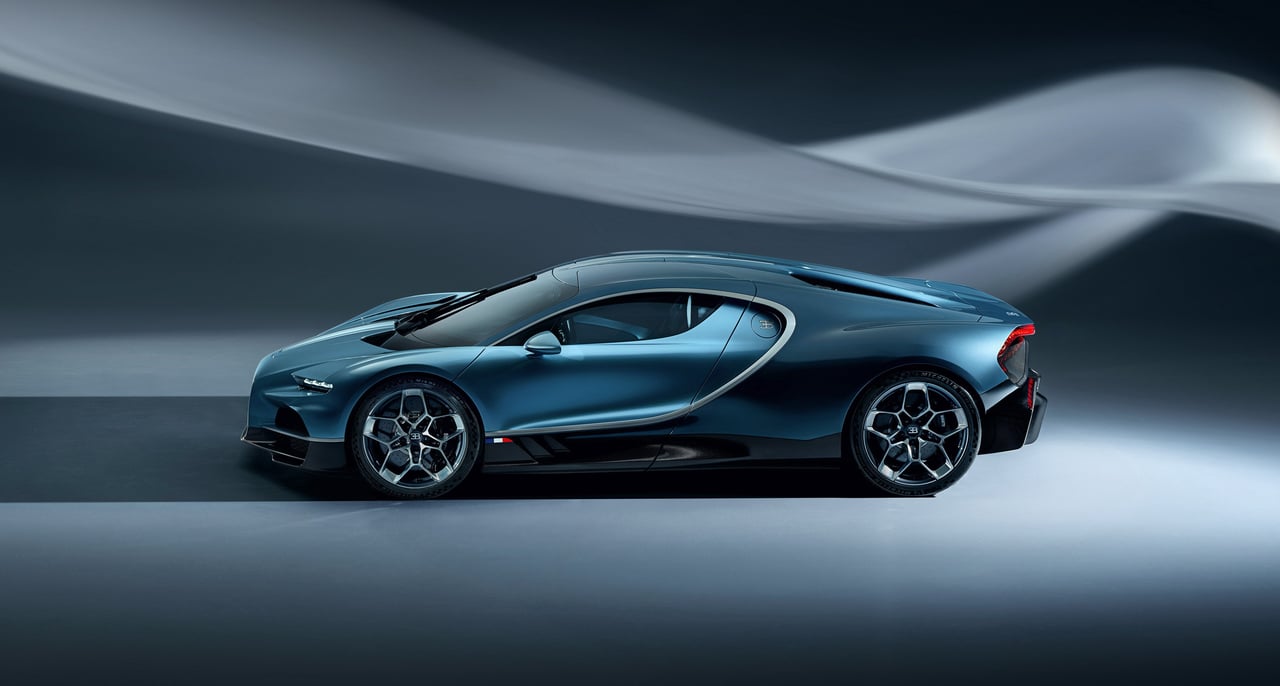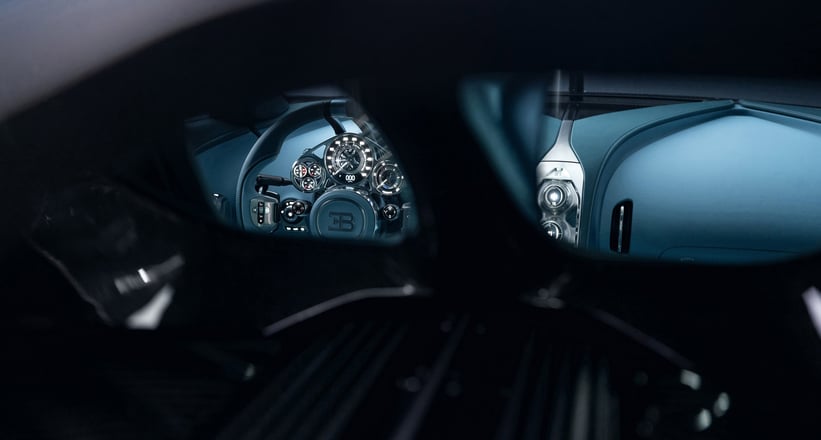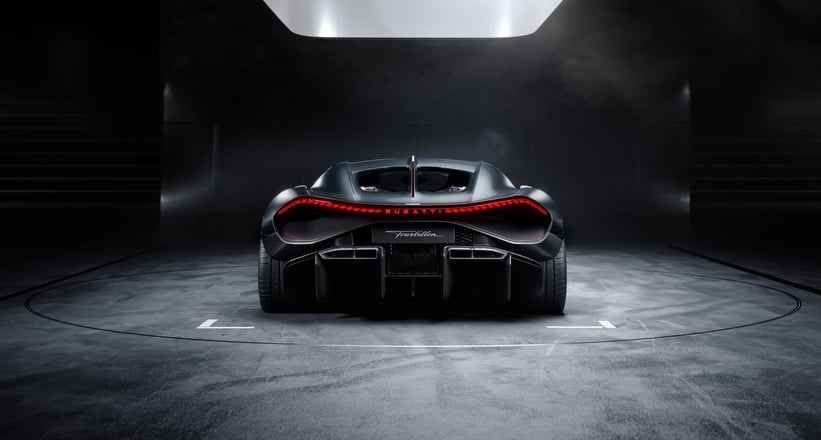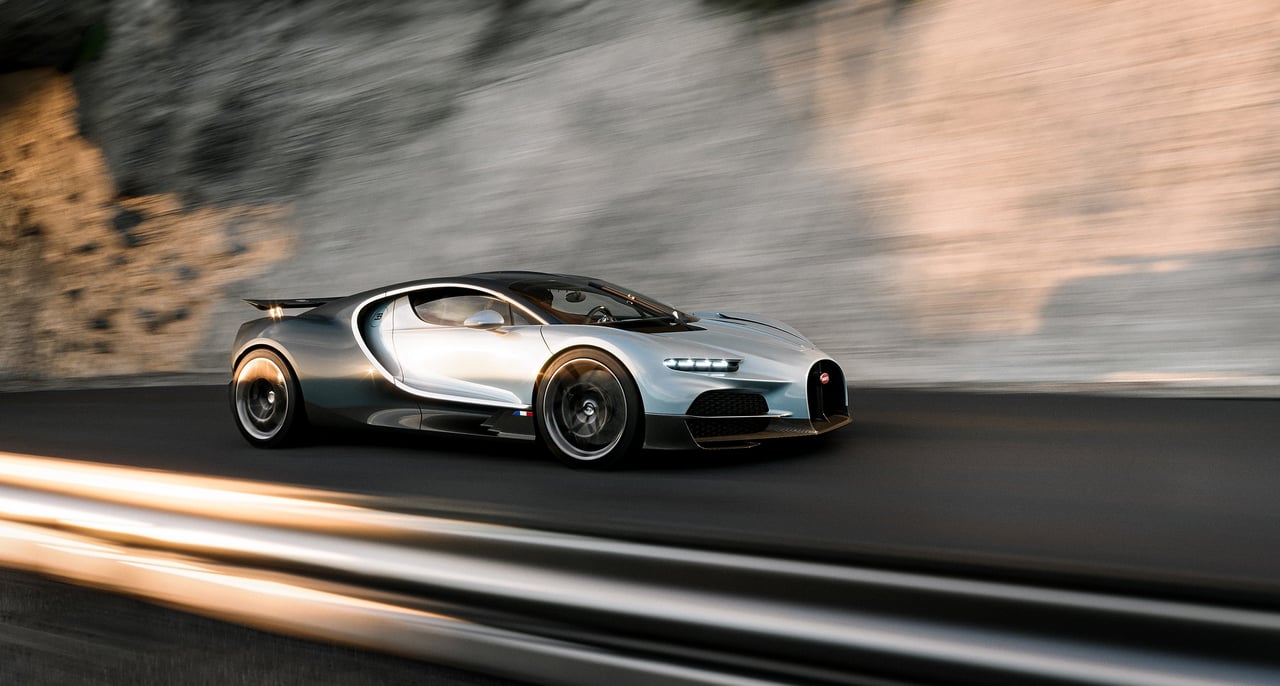
Arguably no new car carries the same weight of expectation as a new Bugatti. The brand’s history is studded with superlatives; the Type 35 is the most successful Grand Prix car of all time, while the Type 57 SC Atlantic ranks among the most expensive collector cars in the world. Even since the brand’s revival in the 1990s, Bugattis have been the subject of headlines and global desire, with the W16 era bringing us several models that took the crown as the world’s fastest production car. In time, each Bugatti becomes a technological and artistic yardstick, and today they unveil the Chiron’s successor, which utilises a next-generation chassis, an entirely new design, and a cutting-edge V16 hybrid powertrain. Messieurs-dames, meet the Bugatti Tourbillon!



First thing’s first: let’s unpack the Tourbillon’s truly jaw-dropping exterior. Viewed from the front, the Tourbillon employs larger, more aggressive air intakes, no doubt necessitated by that whopping 8.3-litre V16, but more on that later. While the horseshoe grille is a Molscheim signature, Bugatti’s designers have taken direct inspiration from that of the Type 35, where the whole shape of the car was guided by the shape of the grille.



Further influence comes from another Bugatti great, the Type 57SC Atlantic, where the S stands for ‘Surbaissé’ or ‘lowered’, so the Tourbillon adopts a lower roofline, frontal area, and driving position, as well as the 57SC’s iconic central spine which splits the Tourbillon’s windscreen. From the side, the Bugatti line now curves around the doorframe more sharply, accentuating the Tourbillon’s aggressive silhouette. It’s also clear that many titans of the W16 era share DNA with this latest Bugatti hypercar; hints of the Centodieci can be seen in the Tourbillon’s headlights and ‘flying fenders’, which direct air underneath the headlights and into the side intakes. Finally, moving round to the back, you’ll notice the Tourbillon’s rear lights closely resemble those found on the one-of-one La Voiture Noire, while the diffuser has been supersized thanks to a redesigned rear crash structure. Overall, it’s a supremely imposing automobile, which is only fitting.



However, it’s what’s inside that will truly tug at your heartstrings. With a click of a button, the advanced, electrically actuated dihedral doors swing open to reveal a cornucopia of carbon fibre, leather, titanium, and billet aluminium. The Tourbillon’s seats are fixed to the carbon tub to maximise cabin space, while the only screen in the cockpit remains hidden inside the dash until required. Take a seat, and you’ll have a full view of the Toubillon’s party piece: the most dramatic instrument cluster ever created.



Designed and built with the expertise of Swiss watchmakers, the instrument cluster is comprised of more than 600 pieces of titanium, sapphire, and ruby, assembled with tolerances as fine as 5 microns. This mechanical jewel harks back to the tourbillon from which this new Bugatti gets its name, a watchmaking invention designed in 1801 to counteract the effects of gravity by Swiss-born genius Abraham-Louis Breguet — something that has yet to be improved 200 years later. Bugatti state this mechanical timelessness was core to the philosophy behind the Tourbillon; just as Type 35s grace concours lawns around the world today, they intend for the Tourbillon to do the same in a century’s time.



Bugatti are so enamoured with the Tourbillon’s instrument cluster that they designed the steering wheel to rotate around it while it remains fixed in place — a set-up known as a fixed hub steering wheel, that has been utilised occasionally by other French automakers in the past, but never with this level of luxury and craftsmanship. Other highlights of the interior include the aluminium accents, which are all milled form a single block of metal, while crystal glass adorning the switchgear was intended to showcase the specially designed complex mechanisms hiding beneath. Even the audio system is over the top; the Tourbillon forgoes conventional speakers in favour of exciters that turn panels throughout the car into speakers.

As far as we’re concerned, though, the Tourbillon could have left its sound system on the workshop floor, because there’s a whole V16 orchestra nestled behind the driver. Developed in collaboration with Cosworth, the titanic naturally-aspirated 8.3-litre engine produces 1,000 horsepower and revs to 9,000rpm, while weighing just 252 kg. Then there’s the electric motors, which add a further 800 horses to the stampede, helping the Tourbillon to rocket to its 444 kph top speed. Being a hybrid, the Tourbillon packs a 25 kWh 800v battery that provides an all-electric range of 37 miles, probably to protect urban structures from crumbling under the V16’s monstrous roar.



Overall, it’s clear that Bugatti haven’t held anything back in creating the Chiron’s successor, including the price, which starts at 3.8 million euros. Just 250 examples will be built, with first deliveries expected in 2026. To end, it’s worth including this quote from the man responsible for this master work, Mate Rimac: “Yes, it is crazy to build a new V16 engine and to have a real Swiss-made watchmaker instrument cluster, with 3D-printed suspension parts and a Crystal Glass centre console. But it is what Ettore would have done, and it is what makes a Bugatti incomparable and timeless. Without that kind of ambition, you might create a great hyper sports car, but you wouldn’t create an icon pour l’éternité.”
























